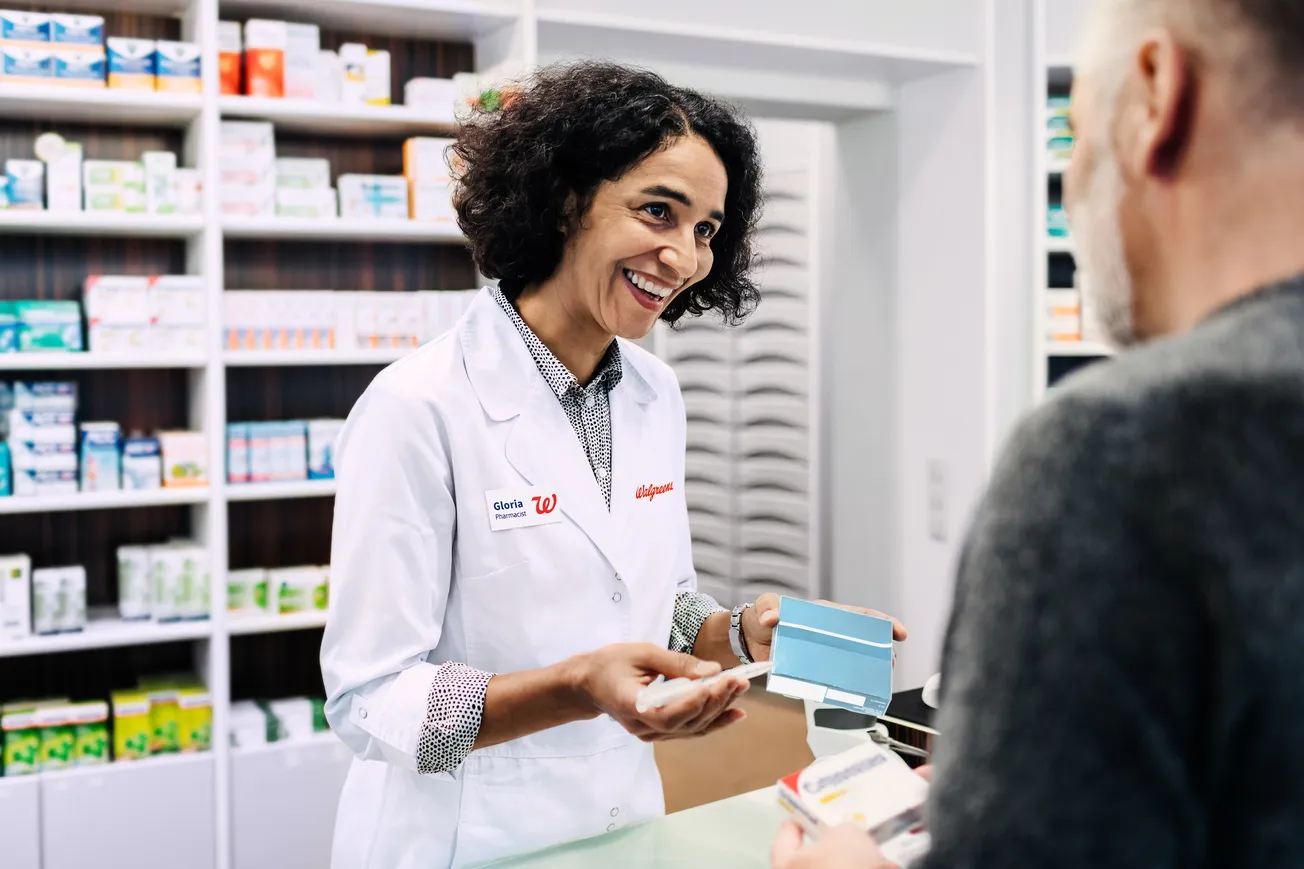Hard to believe that we are already one-third of the way through 2024. Time feels like it is accelerating — I think it’s because our increasingly digital age shortens the maturity curve of innovation, and things that used to unfold now pop instead. That’s how I feel about the weight loss revolution facilitated by GLP-1 agonists (GLP1s). Talking to friends and clients as varied as my local coffee shop owner (Maria’s of Chester) to executives across CPG food, employee benefits, retailing, fashion, commercial real estate and every aspect of health care, the impact of GLP1s comes up regardless of where the discussion started (most of the people outside of health care use the brand Ozempic, by the way, not GLP1).

Steven Robins
Try it yourself. Find your oldest, crankiest friend, and GLP1 use will be just another example of how people are taking the easy way out; along with sneakers you no longer have to tie and shirts made to be untucked. If you are friends with any general/family practitioners, you will hear at least one case study of a patient who went from hopelessness to a shining example in under six months. Talk to any other adult you know, and they will know at least one person who had side effects and quit but is now thinking of going back.
Between Oprah, Whoopi, Elon, Charles Barkley, Amy Schumer, and many other influencers and celebrities, the general public is getting the point: Taking GLP1s works like nothing else, and, taking them is OK and nothing to be ashamed of. It’s the proactive and positive way to get the upper hand on obesity finally.
While GLP1s are part of the 2020s zeitgeist, there are questions about whether or not they will sustain the growth. Few industries outside of pharma and benefits brokers are capitalizing on the existing opportunities for this population. Similarly, few companies have broadly executed strategies that effectively mitigate some financial risks from the behavior changes already visible in several categories.
There is no question that the magnitude of paying for these drugs and the duration of treatment makes the ultimate user population tough to peg. There is also no question that, historically, “weight loss miracles” like Fen/Phen or Orlistat (or a multitude of others) have fallen terribly short of expectations. So, while winning in this brave new world of highly efficacious obesity drugs is a market situation tailor-made for some deep, well-thought-out scenario planning, the word count allocated for this OpEd is not as ideal, so let me get to what I believe are five key considerations to frame your thinking whether you are any retailer or a manufacturer, and a sixth consideration specific to the pharmacy space.
Consideration No. 1 — GLP1s have already
changed weight loss.
More people are already on GLP1s than used Fen/Phen at its peak. Based on several historical articles and the ultimate legal settlement, there were between 6 million and 7 million users. In the case of GLP1s, the population currently on a GLP1 or having used a GLP1 in the past exceeds 10 million and is growing rapidly. Based on the prescription data available at this writing, the average weekly prescriptions for GLP1s are approaching 1.3 million. New prescriptions are currently around 750,000, growing sequentially every week.
More than the number of users reported, the levels of weight loss are impressive. Imagine a world of weight loss advertising that shows a before-and-after picture of a 100-pound weight loss with the legal disclaimer: “Weight loss results pictured are typical.”
Many of these consumers have achieved or exceeded their goal weight. Getting to a weight you haven’t been in years is wildly different from losing “some” weight, as they have likely done successfully on multiple diet attempts. Openness to new goods and services ranging from lifestyle and activity to nutrition and weight maintenance are likely to resonate with these consumers more now than at any time in the recent past. At the same time, those considering obesity medications are seeing people they know, and people who influence them, get “all the way down,” so it becomes a real possibility for them.
Consideration No. 2 — You are late but not too late yet.
Every one of the current users and those who have reached their goals is creating their own new normal. They are already in the marketplace today, shaping behaviors and preferences that will become more fixed as they approach their goals and pivot from weight loss to maintenance. Their choices about exercise, dining out, nutritional supplements, entertainment, store choice, fashion, skin care, vacation destinations, etc. offer immense opportunities early on for category and brand incrementality. However, once GLP1 users reset their preferences, the incremental opportunity decreases.
The good news is that most forecasts (barring a safety issue) point towards significant penetration growth for at least the five-year strategic planning horizon, so substantial incremental gains are still available for brands that capitalize on the opportunity quickly.
Consideration No. 3 — Consumer education is a crucial element for category growth.
I haven’t even submitted this OpEd, and I already regret how often I used the handle GLP1. While it is accurate, I should have come up with something coinable to describe any medication that unlocks significant, rapid weight loss. That would have been the intelligent consulting thing to do. There is a slew of SRWLMs coming down the road, and many will be multiple mechanisms and or non-GLP1s altogether. (Author’s note: SRWLMs was a major fail as an acronym. People will start to refer to them as “Sir Williams” and the royals have enough to deal with right now.)
The point of the digression on nomenclature is that most people who experience rapid and significant weight loss need to understand its ramifications. “Ozempic face” may be a common parlance, but few understand the importance of increasing lean muscle and maintaining bone density as tools for long-term health and weight maintenance.
Consideration No. 4 — Build coalitions to amplify health and nutrition messaging.
Our collective interest as retailers and manufacturers is to educate this population. From a selfish point of view, there are growth opportunities across several large categories, including VMHS, skin care, consumer electronics, hair care, skin care, hydration, GI and many more.
It is also an opportunity to bring together associations that publish nutrition and weight loss guidelines. There is a significant opportunity for improved alignment with retail pharmacies, manufacturers and the patient populations we all serve. Today, the American Diabetes Association takes a dim view of supplementation, and its website has not openly addressed the millions of people with diabetes who are on GLP1s. Similarly, manufacturers like Hologic and GE Healthcare, who make the DEXA machines crucial to highly accurate body composition, can amplify the educational messaging targeted to the rapid weight loss community.
Consideration No. 5 — Even categories seeing a negative impact can adapt to win.
Contrary to the popular press, the opportunities for restaurants, CPG food, confections and alcoholic beverages will remain plentiful in a world where GLP1s exist. The categories must pivot, evolve offerings and leverage effective marketing programs, but they can still grow at reasonable rates.
I offer this as a quick analog. When I went to work for Warner-Lambert in 1993, it was rolling out an internal e-mail system, which was the very beginning of the paperless office. Thirty years later, in 2023, office printer paper is still growing, up 2% versus a year ago.
Consideration No. 6 — Lilly’s use of DTC accelerates a move away from retail pharmacy.
Lilly’s announcement in the fourth quarter of 2023 that it would allow consumers to access Zepbound directly through its website was a major departure for a branded prescription drug. While lifestyle prescription DTCs like RO (Roman) and Hims have offered prescription products, they served as the brand. Similarly, DTC diet brands like Sequence promised access to GLP1s, but, again, they promoted their brand instead of any single prescription solution.
Insurers are also trying to move their members out of retail pharmacies. Several insurers used the GLP1 supply shortages at retailers as an opportunity to press their efforts to increase efficiency by directly fulfilling their members’ prescriptions through free home delivery.
Lilly’s move and subsequent decision to partner with Amazon Pharmacy indicate that retail pharmacies have to do more than text when your prescription is ready. As I have said in previous articles, freeing the pharmacist to interact more with customers may be the key. In this case, the pharmacists could help educate GLP1 users and curate the solutions they need to stay healthy and thriving during and after their GLP experience.
So embrace the new weight loss revolution … before it’s too late.
Steven Robins is managing partner/principal at the New England Consulting Group.









